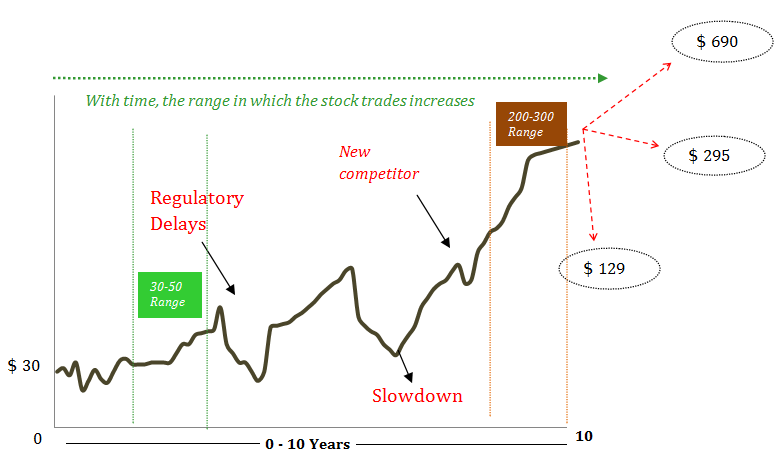Contents:


So, the processes also need to change along with the time, environment, and needs. The truth is that employees working in any organization are always busy, or they show themselves to be. Some might even lie on their reports, and these are the employees with the lowest performances. We have found three vital elements you must practice for building the “People” in the entire framework.
Youth Forum: How change-makers are shaping a more sustainable … – UN News
Youth Forum: How change-makers are shaping a more sustainable ….
Posted: Mon, 24 Apr 2023 10:58:01 GMT [source]
The next thing to do is to look at the information you have gathered. Analyzing trends, contrasting different aspects of the process, or placing it in the context of related systems are all part of this exercise. DevOps relies heavily on its team members; thus, their contributions are crucial. Building a DevOps team without considering employee dynamics is like trying to build a house without first addressing the foundation. The first step in implementing DevOps is auditing your existing people, process, and technology.
Maximize People, Process, Tools for Peak Organizational Performance
Transform data into information and information into knowledge. To facilitate the mapping of personal skills needed for each task, based on acquired knowledge. To give people autonomy in their jobs and find new ways to fulfill them.
Understanding how your products are used helps you prioritize development, meet requirements and build consensus. Request for a free demo to see how Waydev can help you make the most of your people, process, technology strategy. This is why it is crucial to continuously adapt processes to the team, the landscape, the objectives. As an integral part of the PPT framework, processes must be carefully defined and documented.
- Today, our partners allow us to get on with providing value to our customers rather than every business needing to become a technology company.
- Choose the best tools that you can use to ensure that every element of the framework is aligned with each other.
- Once the people and processes are in place, organizations should consider the technology to support them.
- The benefit of having a brand new facility with well-established processes from the opening is a definite advantage of de-novo and franchise groups..
- Strategic Transformation Plan and implement change fast and mobilize resources to gain a competitive advantage.
These key steps will most likely contribute more to the end result. Thus, improving these steps will have the most impact on process efficiency. Once these are in place, they can start fiddling with the finer details, exceptional cases, and supporting processes.
How to Transform Your Organization with People, Process, Technology
Since the beginnings of Information Technology Infrastructure Library and Information Technology Service Management , people, process, technology has been a mantra. It just doesn’t have the depth you need to truly implement a project or change; it can’t stand alone,” Friedenberg explains. It’s easy to become enamored with the latest and greatest technology and the vendors who sell it, only to discover too late it does not fit your organization’s changing needs. The real value in any technology is getting the buy-in and backing to make the most of it. “I’ve seen a lot of companies spend a lot of money on technology, and then don’t use it or don’t use it correctly,” Schnepf says. She notes that when that happens, there is little or no ROI for the technology.
Since they involve iterative actions that ensure the same result, no matter who is responsible, processes are vital for efficiency. The PPT framework defines the process as the series of steps and actions that come together and that are required to happen to produce a specific result or goal. Unlike the people component, which focuses on the “who,” processes respond to the question, “How will we make things happen?

Get the systems you need up and running, and then expand from there. Doing too much at a time can overwhelm people and compromise the technology’s utility. Morris then asked how far into the commute the manager knew what to expect for the day. The manger said he knew when he was about halfway into the drive. That’s when the manager understood that you don’t actually know how much time you’ll need until you have an understanding of all the contributing factors.
MARCUS for BUSINESS
Without good people in the right roles, your small business will struggle to serve customers, dampening your potential revenue. If you don’t put effective processes in place for sales, production, billing, accounting and customer relationship management , your overhead costs will increase, reducing profitability. And if you don’t have products or services that meet the needs of your market, it won’t be long before your small business is forced to close its doors. Look together with the employees for the driving forces and those actions, which lead to structural improvements.

Book a demo with us if you would like to have your PPT dashboard set up based on your unique company culture and processes. Faster time-to-market and better software development are made possible by technology. As part of the PPT framework, technology facilitates people and day-to-day activities in DevOps. Automated monitoring, configuration management, centralized logging, and troubleshooting are just a few of the DevOps principles enabled by technology. In collaboration, everyone works together toward common goals based on a culture of trust. In order to improve processes, they should always share ideas with each other.
DevOps brings together development and operations to work side by side to ensure that a product meets its goals and deadlines. By definition, DevOps is an application of the People, Process, Technology framework applied to the software engineering organization. People Process Technology supports BPM as a basis for implementing organizational changes, improvements, and reengineering. As separate components, people, process, and technology are essential for organizational growth, transformation, and management. To achieve organizational efficiency, all three elements must balance and sustain good relationships and interactions among themselves.
- The sweet spot may no longer be an equal balance between the three.
- People are the ones who will be doing the work and making things happen.
- We would still have People, Processes, Data and Tools of course, but now viewed from a new perspective.
- Maybe there are different and faster ways to enhance performance.
- It starts with identifying the right team, process development, and description.
A change in one of the parts will result in an effect on the others. Managers are required to meet with staff to ensure information flows throughout the organization. I am familiar with has a very structured communication model. The employee felt like she had a perspective that could improve operational efficiencies in the department that were not being heard. Fill out the form today and our sales team will help you schedule your private Pragmatic training today.
The linkage between consistent balance sheet examplees and having the right people is critical to scale a business. This is where you need to bring in the people who understand the technology and can use it effectively while teaching others how to best utilize the same without wasting resources and time. Try to redirect, acquire, or wait for the right people before you take on a new project. Finding the right people in the process component of the framework is imperative to build a high-performing team. It’s imperative people understand how they fit into a process.
Road to supply-chain attacks paved with ignorance, human error … – SDxCentral
Road to supply-chain attacks paved with ignorance, human error ….
Posted: Mon, 24 Apr 2023 15:30:13 GMT [source]
It’s usually performed on a regular basis to identify whether there are problems with the process and how it might affect the results. This includes product owners, software engineers, testers, quality assurance, DevOps/SREs, and all other team members involved in software development. The process part of Six Sigma calls for more intensive monitoring using a set of managerial methods that are mostly empirical and statistical. Typically, Six Sigma-certified experts within an organization implement the framework. When building your knowledge management program, keep the PPT components in mind.
An organization’s culture is the aggregation of its mission, vision and values plus the beliefs, attitudes, behaviors and actions of both its leaders and its performers. In a thriving culture with authentic leaders, employees who are encouraged and empowered will consistently create and contribute. However, an authoritarian, change-resistant or risk-averse culture prevents innovation.
If the golden triangle is your target, then using an innovative business process management system must be one of the tools you need to achieve that. Using software with features like workflow management, process tracking, and building bespoke systems will certainly help improve the outcome in every respect. Your company’s culture is also pivotal to implementing the golden triangle framework successfully. Culture implies how people are interacting with the existing processes and systems while understanding how they are communicating.

A nightly build process could run automated tests on every commit before merging it into master, for example. In DevOps, people’s best practices might include sprints to incorporate user feedback, or status meetings or stand-ups at the start and end of every workweek to keep everyone informed. Applying best practices in the People, Process, Technology framework can improve one or more aspects of your organization. Ensuring that employees feel empowered to take action is perhaps the most important aspect of this framework. It is unlikely that employees will make decisions if they feel powerless to influence change or have a voice in decisions. Providing employees with information and resources is important for them to feel valued.
